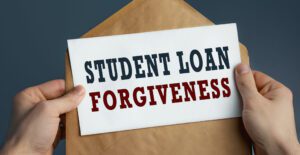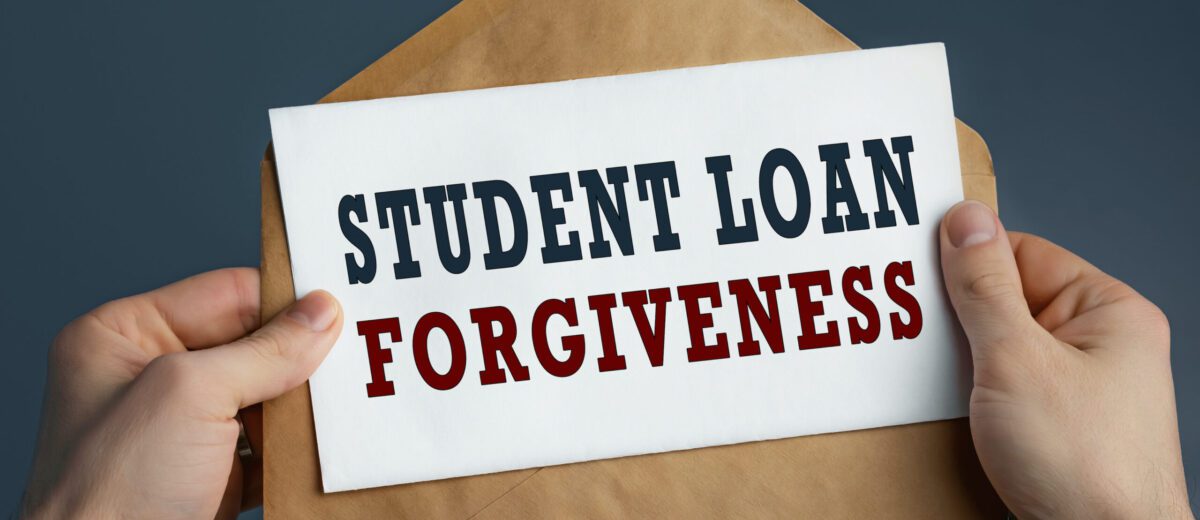Didn’t get Public Service Loan Forgiveness? Try Again!

Didn’t get Public Service Loan Forgiveness? Try Again!
Federal student loan programs have had forgiveness built-in for a while now, but forgiveness takes a long time. The standard period for most loans to receive forgiveness is 20-25 years. Standard payoff plans for federal student loans are 10-year paybacks, so these would obviously not be helpful. However, there are a several “Income-Driven Repayment” (IDR) plans available that can extend payments for a much longer period.
Borrowers angling for standard forgiveness programs need to consider the cost of interest over such a long period of time, along with the fact that standard loan forgiveness is a taxable event. For most of these borrowers, the answer to “should I try for forgiveness?” is “It’s complicated”.
Public Service Loan Forgiveness – A Better Deal (if you can get it!)
Public service loan forgiveness (PSLF), however, is often a better deal, for a couple of important reasons:
- It can happen quicker, with as little as 120 qualifying monthly payments.
- Public Service Loan Forgiveness is tax-free. Amounts forgiven under PSLF are not considered income to the borrower.
The rules for Public Service Loan Forgiveness have always been very strict. Applicants for PSLF need to prove that they’ve made the:
- RIGHT NUMBER OF PAYMENTS – 120 monthly payments must have been made. Payments that exceed minimums don’t count as more monthly payments. Payments that are short by even one penny or late by even one day don’t count.
- ON THE RIGHT TYPE OF LOAN – Federal Direct Loans, issued by the US Education Department, are the only types of loans that qualify. Borrowers who had Federal Family Education Loans (FFEL), which were the primary type issued before 2010, needed to consolidate their loans into Federal Direct loans for payments to be qualified for PSLF. Federal Perkins loans don’t qualify. Additionally, NO private loans qualify.
- WHILE ON A QUALIFYING PAYMENT PROGRAM – There are numerous plans available for repayment. However, only payments made while under one of four income-driven repayment plans can qualify for the 120 payments needed to achieve PSLF.
- WHILE WORKING UNDER QUALIFYING EMPLOYMENT- Anyone employed by a state or federal government employer or a 501(c)(3) nonprofit is considered a ‘public service’ worker for the purposes. The employment must be full-time.
Common reasons why Public Service Loan Forgiveness applications are denied
Public Service Loan Forgiveness was passed in 2007, so the first applications for this forgiveness were processed in 2017. Especially early on, though, most of these applications were not approved. The most common reasons for rejection were:
- Incorrect Loan Type – FFEL loans don’t qualify (yet they were the predominant loan type from the beginning of PSLF in 2007 until 2010). Perkins loans also don’t qualify. These loans needed to be consolidated into Federal Direct loans before payments could qualify toward the 120 required for forgiveness. Private student loans do not qualify for PSLF.
- Not the right type of payment plan– Payments made under any arrangement OTHER than the four Income Driven Repayment options do not count toward the 120 required for forgiveness.
- Minor accounting issues – Often the result of errors at the loan-servicing organizations, reported payments were off by mere cents or a day beyond due. These payments did not count toward the 120 required for forgiveness.
Overhaul available – FOR A LIMITED TIME!
The frustration expressed by the large number of borrowers who were denied Public Service Loan Forgiveness has been heard in Washington DC. To address situations where confusion and loan-servicing issues have resulted in denied applications, the US Education Department in October laid out a waiver of some of the rules until October 31, 2022.
During this period, the Education Department will review previously reported payments for the following:
- FFEL and Federal Perkins Loan Payments – While these are not typically counted toward PSLF eligibility, they will be retroactively counted as qualifying payments.
- NON-IDR Payment Plans – During the waiver period, payments made under ANY plan will now count toward forgiveness. (Note that since March 2020, most of these loans have been in forbearance under the CARES act, and this will continue until February 2022).
- Address/Clerical issues – The Education Department will also be going through records to update and correct certain address issues, and to automatically qualify payments to employees of Federal agencies.
While most qualifying borrowers will see the updates to the number of qualifying payments automatically, they will still want to complete the application for Public Service Loan Forgiveness even if they’ve already applied in the past.
Also, keep in mind that this waiver only applies until October 31, 2022. Anyone still working toward Public Service Loan Forgiveness beyond that point should make sure that they have consolidated any FFEL or Perkins loans under the Federal Direct Loan program for payments after that date to be counted. Also, if you are not under one of the four qualifying income-Driven Repayment plans, you’ll need to file to change your repayment plan for future payments to continue to count toward your 120 minimum.
Importantly, private student loans do NOT qualify for forgiveness. Even if you had an otherwise qualifying loan program while employed for a qualifying employer, if you refinanced those loans under a private lender, they are not going to qualify for Public Service Loan Forgiveness. However, if you were previously denied PSLF and have decided to refinance your loans privately to take advantage of lower interest rates, STOP! You may yet be eligible for forgiveness!
This waiver will likely impact the eligibility of hundreds of thousands of federal student loan borrowers. If you’re one of them, the time is NOW to make sure you’re best poised to benefit from this new program.



